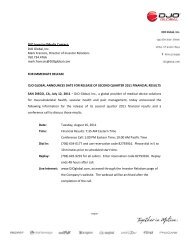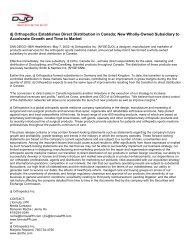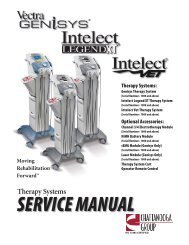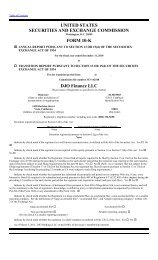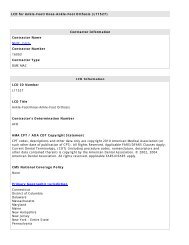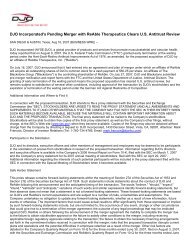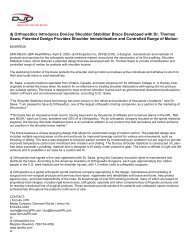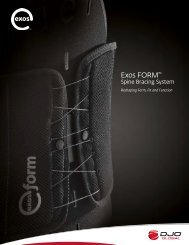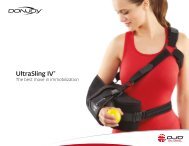Intelect Transport Ultrasound User Manual - DJO Global
Intelect Transport Ultrasound User Manual - DJO Global
Intelect Transport Ultrasound User Manual - DJO Global
Create successful ePaper yourself
Turn your PDF publications into a flip-book with our unique Google optimized e-Paper software.
ABOUT ULTRASOUND THERAPY<br />
<strong>Intelect</strong> TranSport® <strong>Ultrasound</strong><br />
Preventing Overheating of the Sound Heads<br />
To prevent the sound head from becoming overheated, do the<br />
following:<br />
• Check to be sure proper contact is being made throughout the<br />
treatment.<br />
• When treating in water, make sure that the sound head is<br />
completely under water.<br />
• For direct coupling, you may need to apply more conductive gel<br />
or lotion during the treatment to achieve better coupling.<br />
• You can also reduce the power or duty cycle during the<br />
treatment if you are treating an area where it is difficult to obtain<br />
good coupling.<br />
Preventing Adverse Effects<br />
Perform the following procedures to avoid the negative effects of<br />
ultrasound therapy.<br />
Sound Head Movement<br />
If movement of the sound head is too slow, the patient may feel<br />
periosteal pain characterized by a deep ache or pain. If motion<br />
is too fast, or if the sound head does not maintain good contact<br />
with the skin, the therapeutic effect of the sound waves will be<br />
11<br />
reduced and the sound head may overheat.<br />
Patient Susceptibility<br />
Some patients are more sensitive to ultrasound output and may<br />
experience a reaction similar to a heat rash. Be sure to inspect the<br />
treatment area during and following treatment, and discontinue if<br />
an adverse reaction does occur.<br />
Output Power<br />
Choose a lower watt setting to reduce output or select a pulsed<br />
duty cycle. Higher output levels have a greater potential for<br />
patient discomfort.<br />
Coupling<br />
Coupling is described as contact between the sound head and<br />
the treatment site and may be accomplished through the use of<br />
a coupling agent, such as gel, lotion or water (underwater treatments<br />
only). Anything used as a coupling agent must be highly<br />
conductive. Air is a very poor conductor of ultrasonic waves.<br />
Head Max. Temp. Disclaimer<br />
Head Max. Temp. is for the protection of the equipment, not for<br />
the protection of the patient.



